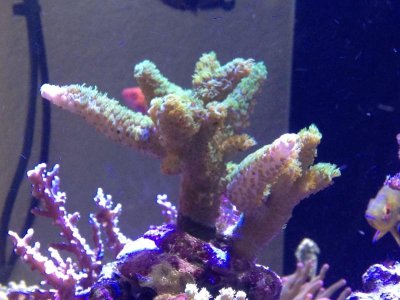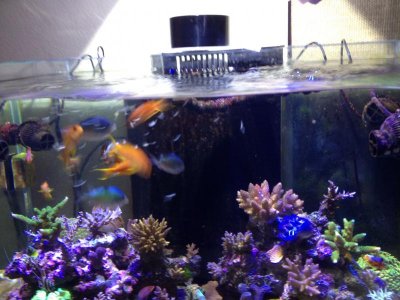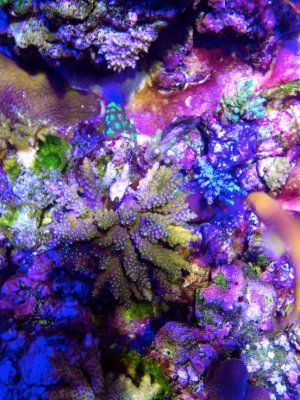mhucasey
Acros & wieners, oh my!
The problem with the precipitation hypothesis is that precipitation requires high amounts of Ca in a high pH solution(such as limewater). The pH of Calcium nitrate is between 4-7.5(from a google search, i didn't test it). The amount of calcium nitrate added in that first dose would only have added 1ppm Calcium anyhow.
What I have noticed is fairly mild bacterial blooms a few hours after heavy feedings. When I say bloom, I'm talking about mild cloudiness of the water and an uptick in the skimmer effluent. Usually the water becomes very crystal clear immediately afterward. That's essentially what I saw after the first nitrate dose. I have added additional doses since then, without seeing the same kind of bloom.
I attribute the first bloom to very readily available nitrate and phosphate in the water column. My goal is to maintain a slight excess of nitrate so as to not allow the tank to become nitrate limited. I have been fine tuning my carbon dosing and I am pretty sure that i have somewhat of an excess of carbon in the system(using vinegar), also to ensure that carbon limitation isn't an issue.
Anecdotally, the corals seemed to gain deeper color, especially in the shaded areas(Maybe its my imagination). The Clams definitely darkened and expanded more since dosing began. The cyano on the sand comes and goes, a little less each day. As phosphate leaches from the sand from detritus that is already present, water-borne carbon and nitrate are right there to encourage other bacteria to out compete the cyano. The refugia rocks became very clean and the sand in the fuge is better each day as well. I am looking at getting some Strombus snails or small cucumber to clean the sand of detritus. The rock is pretty much clean of any nuisance algae(I've never had hair algae at all).
The corals look great and are growing well. I chucked the Phosphate remover after the first day and still have zero phosphate, with slightly measurable Nitrate. I'd love to see if the effect was repeatable in another system.
What I have noticed is fairly mild bacterial blooms a few hours after heavy feedings. When I say bloom, I'm talking about mild cloudiness of the water and an uptick in the skimmer effluent. Usually the water becomes very crystal clear immediately afterward. That's essentially what I saw after the first nitrate dose. I have added additional doses since then, without seeing the same kind of bloom.
I attribute the first bloom to very readily available nitrate and phosphate in the water column. My goal is to maintain a slight excess of nitrate so as to not allow the tank to become nitrate limited. I have been fine tuning my carbon dosing and I am pretty sure that i have somewhat of an excess of carbon in the system(using vinegar), also to ensure that carbon limitation isn't an issue.
Anecdotally, the corals seemed to gain deeper color, especially in the shaded areas(Maybe its my imagination). The Clams definitely darkened and expanded more since dosing began. The cyano on the sand comes and goes, a little less each day. As phosphate leaches from the sand from detritus that is already present, water-borne carbon and nitrate are right there to encourage other bacteria to out compete the cyano. The refugia rocks became very clean and the sand in the fuge is better each day as well. I am looking at getting some Strombus snails or small cucumber to clean the sand of detritus. The rock is pretty much clean of any nuisance algae(I've never had hair algae at all).
The corals look great and are growing well. I chucked the Phosphate remover after the first day and still have zero phosphate, with slightly measurable Nitrate. I'd love to see if the effect was repeatable in another system.



